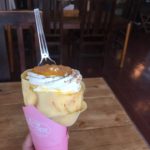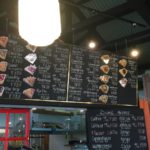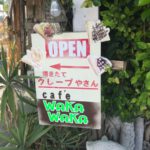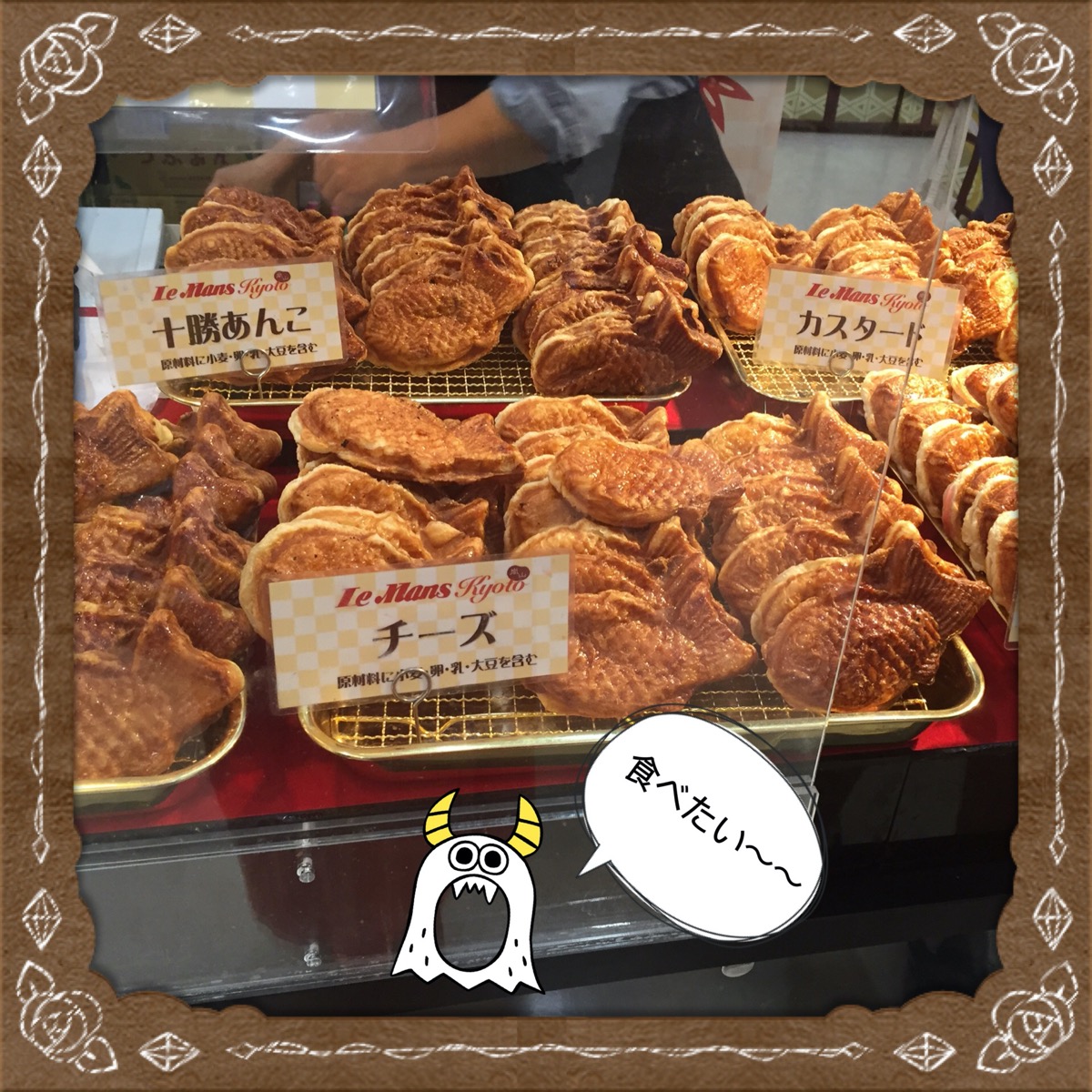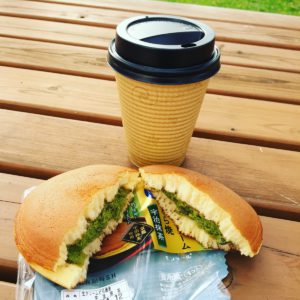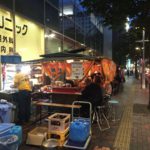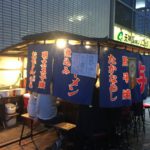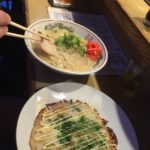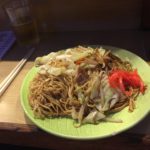Hmmm… street food in Okinawa? To be honest, this is not really much of a thing outside of matsuri (festivals); matsuri are the best times to find all these foods. There are no big street food markets or night markets like some other areas of Asia. But, there are still things I would consider street food, even if they are not all jammed into a large marketplace in one particular area of the island.
Probably the easiest place to check out for “street foods” is in the surrounding neighborhoods of Kokusai-dori (International Street) 国際通り. There are several snack and light meal options, Makishi market, and other small street vendors around. Again, nothing like Taipei, or other places with large street food markets, but some good foods to try while you explore Naha.
Here is a list of some “street foods” to keep an eye out for here in Okinawa:
Yakitori 焼き鳥 (grilled chicken skewers): Yakitori stalls are ALL over the island. Usually they do not open up until ~3pm or so, mostly for the evenings. You can find them alongside many backroads or next to farmers markets, smoke billowing out of their ramshackle stalls. This is not especially Okinawan, but it is a popular Japanese street food.
Pork Tamago Onigiri ポークたまごおにぎり: This is definitely island-style, and I think most Hawaii folks would appreciate this one. I wrote a post on this already, so click the link to check it out. Basically this street stand sells (a fancy version of) spam musubi!
Yatai-mura 屋台村: The literal translation of this place is “street stall village.” This place was set up to replicate Japanese yatai-style dining (again, not really very Okinawan). Anyway, I also wrote a post on this place before, so be sure to click the link to read about it.
Tenpura 天ぷら: Actually, quite a few markets have tempura stalls, where they simply sell individual piece of tempura. Often times you find fish or fishcake, but sometimes there is potato or squid, etc. You will also most likely see mozuku tempura… this is unique to Okinawa, and worth a try.
Nikuman 肉まん (Chinese bun stuffed with meat), Croquettes コロッケ, oden おでん (stewed skewers in broth): You can mostly just find these in the convenience stores. I know, not the same I guess. But, these are types of Japanese street food that you can try in Okinawa. There are occasionally some places that might carry these, but it it is not common to see these along the streets of Okinawa.
Takoyaki たこ焼き (octopus balls) and Taiyaki たい焼き (fish-shaped pastry): The most common place to find these is at Gindaco in the malls. Otherwise you may get lucky and occasionally run into a small shop that sells these Japanese goodies.
Kakigouri かき氷 (shave ice) and Okinawa zenzai ぜんざい (shave ice with red beans): This is all over Okinawa in the warmer months. You can find it on the streets, lunch shops, the mall, pretty much everywhere.
Sata-andagi サーターアンダーギー: Okinawa fried donuts. These can be found in some of the farmers markets or tourist markets.
Just an additional list of some popular Japanese “street foods”: many of these are found at matsuri or other food festival booths in Okinawa, though some may be not be so common outside of that.
Yakisoba 焼きそば: fried noodles.
Ika-yaki いか焼き: I like to call this one grilled squid-on-a-stick.
Yaki-toumorokoshi 焼きとうもろこし: grilled corn.
Okonomiyaki お好み焼き: Japanese savoury pancake.
Ringo-ameりんご飴: candy apple.
Wata-ame わたあめ: cotton candy.
Choco banana チョコバナナ: banana, dipped in chocolate.
Crepe クレープ: Japanese-style crepes.
Frankfurt フランクフルト: hot dog.
American dog アメリカンドッグ: corn dog.
